Bleeding Characteristics and Improving Mechanism of Self-Flowing Tailings Filling Slurry with Low Concentration
Abstract
:1. Introduction
2. Materials and Methods
2.1. Raw Materials
2.2. Test Methods
Seepage Water Bleed Rate:
Unconfined Compressive Strength:
Microstructure Analysis:
3. Results and Discussions
3.1. Effect of Solids Concentration on Slurry Bleeding Rate
3.2. Effect of Special Additive on Bleeding Rate and Slurry Strength
3.3. Effect of Special Additive on Microstructure of Hardened Filling Slurry
3.4. Analysis of Infrared Spectrum Characteristics of Hardened Filling Slurry
4. Conclusions
- (1)
- In order to keep the filling slurry self-flowing in the pipe, the slurry solids concentration should not be too low. When the slurry solids concentration is reduced from 60% to 57%, the bleeding rate significantly increases from 15.98% to 28.75%.
- (2)
- When the slurry solids concentration is 60%, the binder-to-tailings ratio is 1:6, and the dosage of special additive accounts for 10% of the binder powder, the filling slurry does not have any bleed water loss and the compressive strength of hardened filling slurry increases by 43.5% after three days. A suitable combination was put forward for actual engineering.
- (3)
- On a micro level, a large amount of needle-like ettringite is generated in the hardened slurry after adding the special additive, and the structure becomes denser.
Acknowledgments
Author Contributions
Conflicts of Interest
References
- Zhai, Y.G.; Wu, A.X.; Wang, H.J.; Chen, Q.R.; Xiao, Y.T.; Shou, Z.Y. Threshold mass fraction of unclassified-tailings paste for backfill mining. J. Univ. Sci. Technol. Beijing 2011, 33, 795–799. (In Chinese) [Google Scholar]
- Zhang, T.; Ma, M.; Wang, H.; Xu, H. A nonlinear rheological model of backfill material for retaining roadways and the analysis of its stability. Min. Sci. Technol. (China) 2011, 21, 543–546. (In Chinese) [Google Scholar] [CrossRef]
- Fusi, L.; Farina, A.; Rosso, F. Flow of a Bingham-like fluid in a finite channel of varying width: A two-scale approach. J. Non-Newton. Fluid Mech. 2012, 177, 76–88. [Google Scholar] [CrossRef]
- Wang, Y.; Wang, H.J.; Wu, A.X. Research of fine tailings bleeding characteristics and influence factors. Gold 2011, 32, 51–54. (In Chinese) [Google Scholar]
- Wu, D.; Cai, S.J.; Yang, W.; Wang, W.X.; Wang, Z. Simulation and experiment of backfilling pipeline transportation of solid-liquid two-phase flow based on CFD. Chin. J. Nonferrrous Met. 2012, 22, 2133–2140. (In Chinese) [Google Scholar]
- Syrakos, A.; Georgiou, G.C.; Alexandrou, A.N. Solution of the square lid-driven cavity flow of a Bingham plastic using the finite volume method. J. Non-Newton. Fluid Mech. 2013, 195, 19–31. [Google Scholar] [CrossRef]
- Peyronnard, O.; Benzaazoua, M. Alternative by-product based binders for cemented mine backfill: Recipes optimisation using Taguchi method. Miner. Eng. 2012, 29, 28–38. [Google Scholar] [CrossRef]
- Fall, M.; Adrien, D.; Celestin, J.C.; Pokharel, M.; Toure, M. Saturated hydraulic conductivity of cemented paste backfill. Miner. Eng. 2009, 22, 1307–1317. [Google Scholar] [CrossRef]
- Li, D.D. Infrared Spectroscopic Study of Sulphoaluminate Cement. J. Chin. Ceram. Soc. 1984, 12, 119–125. (In Chinese) [Google Scholar]

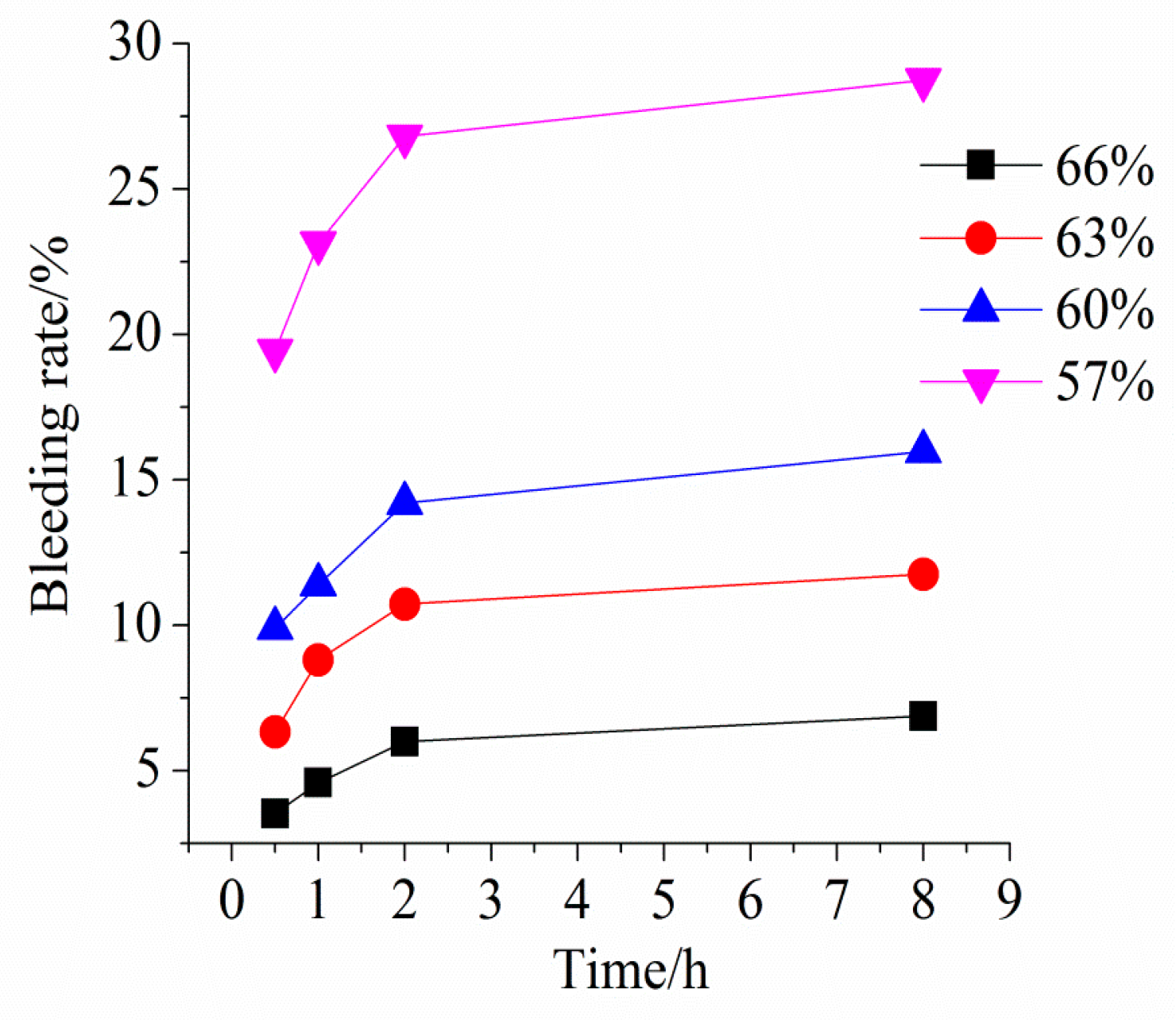
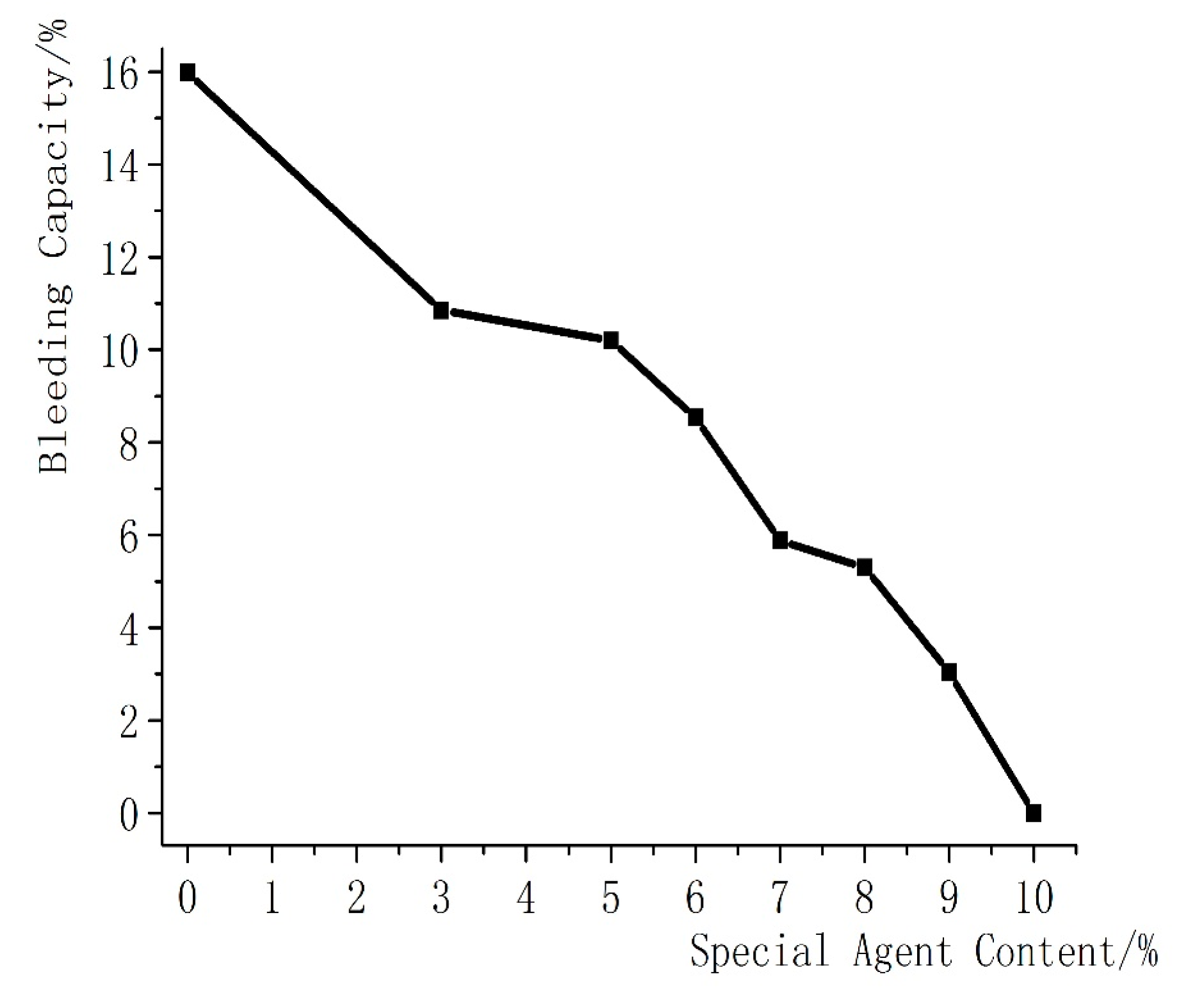
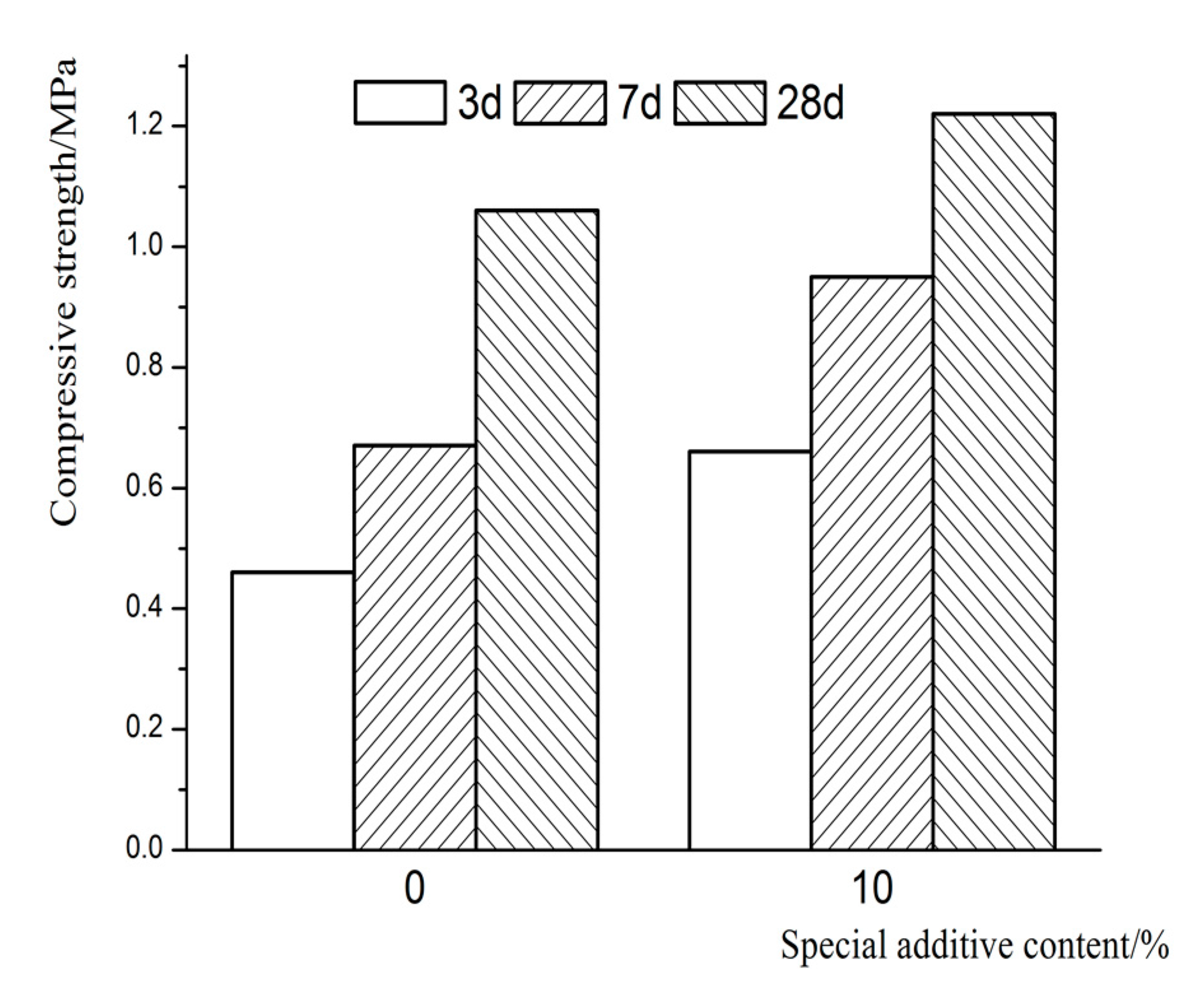
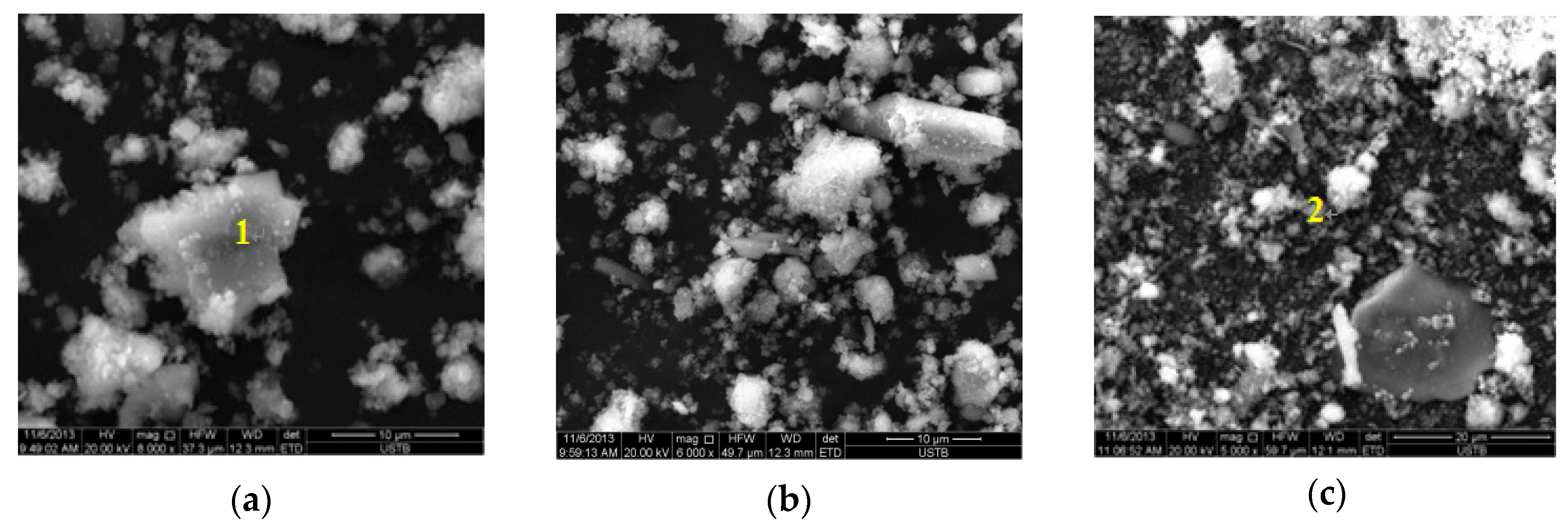



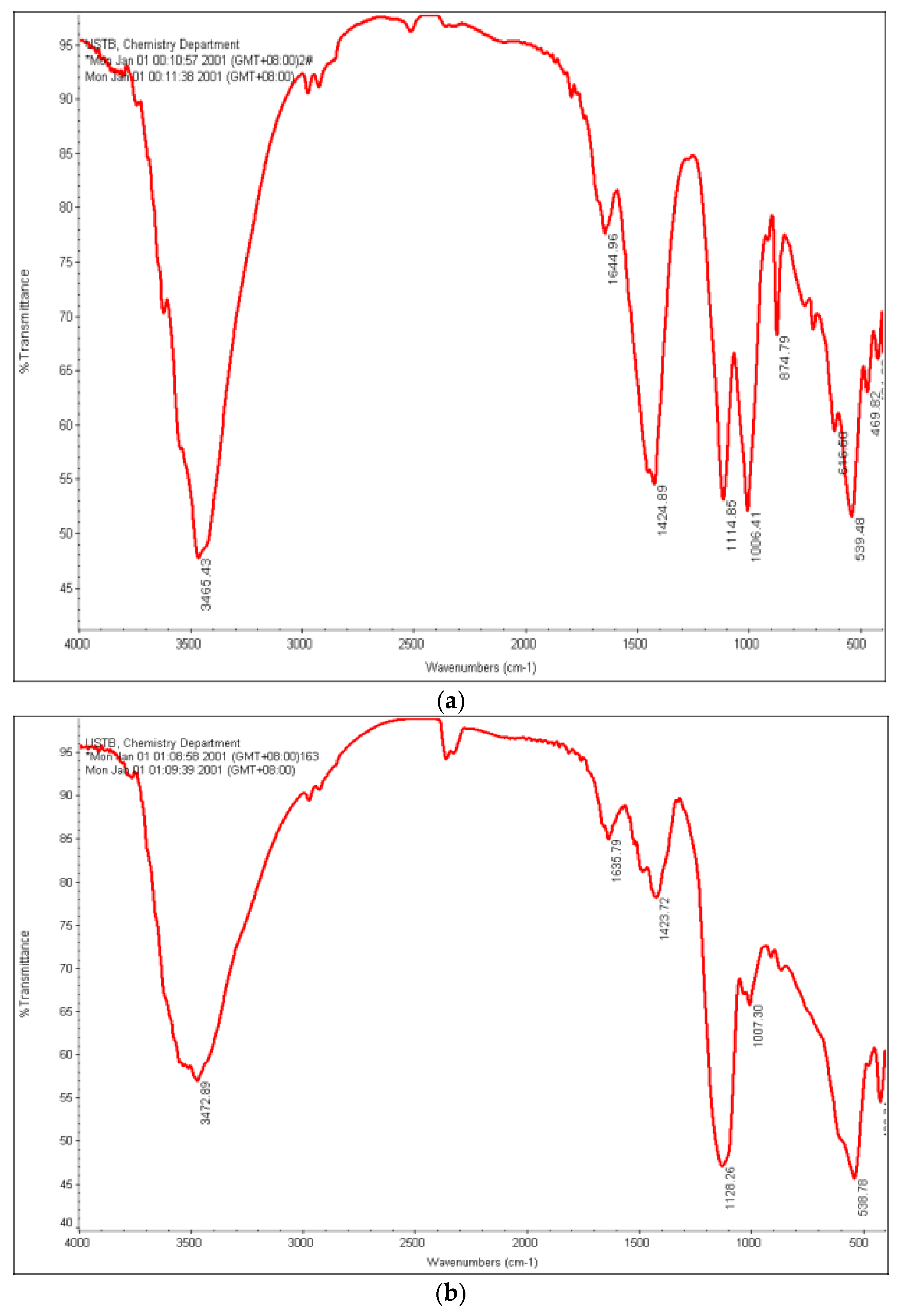
| Water Requirement for Normal Consistency/% | Initial Setting Time/min | Final Setting Time/min | Specific Surface Area/m2·kg−1 | Soundness | Bending Strength/MPa | Compressive Strength/MPa | ||
|---|---|---|---|---|---|---|---|---|
| 3 day | 28 day | 3 day | 28 day | |||||
| 29.2 | 162 | 226 | 392 | Qualified | 4.9 | 9.9 | 27.5 | 50.0 |
© 2017 by the authors. Licensee MDPI, Basel, Switzerland. This article is an open access article distributed under the terms and conditions of the Creative Commons Attribution (CC BY) license (http://creativecommons.org/licenses/by/4.0/).
Share and Cite
Liu, J.; Wu, R.; Wu, A.; Wang, S. Bleeding Characteristics and Improving Mechanism of Self-Flowing Tailings Filling Slurry with Low Concentration. Minerals 2017, 7, 131. https://doi.org/10.3390/min7080131
Liu J, Wu R, Wu A, Wang S. Bleeding Characteristics and Improving Mechanism of Self-Flowing Tailings Filling Slurry with Low Concentration. Minerals. 2017; 7(8):131. https://doi.org/10.3390/min7080131
Chicago/Turabian StyleLiu, Juanhong, Ruidong Wu, Aixiang Wu, and Shaoyong Wang. 2017. "Bleeding Characteristics and Improving Mechanism of Self-Flowing Tailings Filling Slurry with Low Concentration" Minerals 7, no. 8: 131. https://doi.org/10.3390/min7080131




